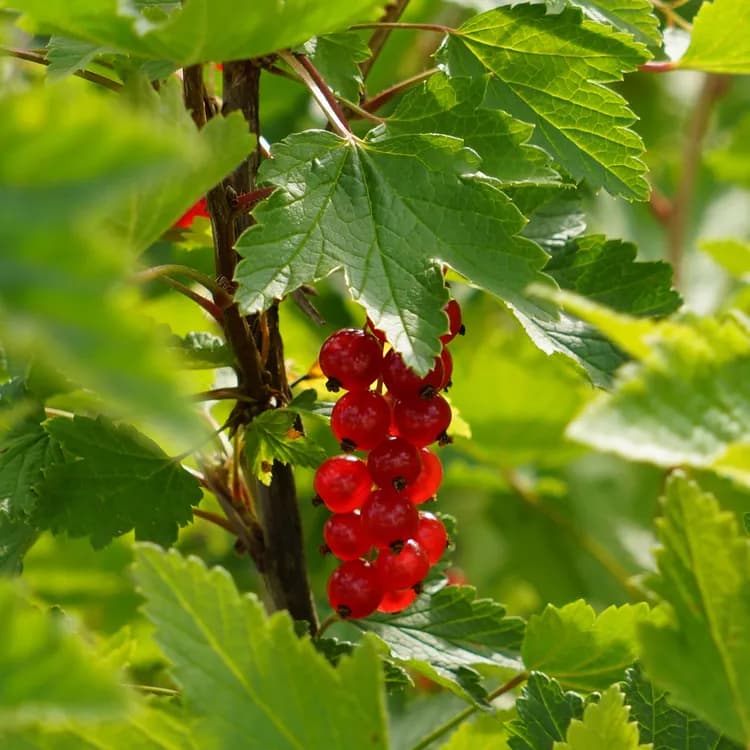The redcurrant (Ribes rubrum) is a member of the genus Ribes in the gooseberry family Grossulariaceae. The plant is native to parts of Western Europe (Belgium, France, Norway, Sweden, Germany, the Netherlands, northern Italy, northern Spain, Portugal, and Poland). The tart flavor of the redcurrant fruit is slightly greater than the blackcurrant; however, they have the same approximate sweetness. Redcurrants are usually cultivated for jams and cooked preparations, but can be used for salads, garnishes, or drinks.
Here are 7 health benefits of the redcurrant:
1. The redcurrant has a lower glycemic index value than many foods.
The glycemic index ranks food and drinks based on their blood sugar increase potential. Foods high on the glycemic index like white rice and white bread will break down easily and cause blood sugar and insulin level spikes after meals, which is followed by rapidly dropping blood sugar levels. The sugar from the redcurrant is slowly absorbed into the bloodstream, which prevents sugar crashes, sugar cravings, and mood swings.
2. The redcurrant can help individuals fight infections.
One cup of redcurrants contains 77 percent of the vitamin C daily requirements. Vitamin C is a potent natural water-soluble antioxidant that helps the body develop resistance against infectious agents and eliminates cancer-causing free radicals in the body.
3. The redcurrant can be great for the hair and skin.
Adequate vitamin C intake does not only improve the immune system but can also create and maintain collagen, an essential protein found in hair and skin.
4. The redcurrant can assist in antioxidant defense.
One cup of redcurrants contains 10 percent of the mineral manganese, which is an essential cofactor in some enzymes important in antioxidant defenses.
5. The redcurrant can assist in red blood cell formation.
Copper and iron are essential for the new blood cell formation. A deficiency of iron can lead to anemia, fatigue, and muscular weakness.
6. The redcurrant can help increase bone strength.
Redcurrants are a good source of vitamin K, which functions in retaining calcium in the bone matrix. Sufficient vitamin K consumption may also reduce urinary excretion of calcium. One cup of redcurrants contains 15 percent of the daily recommended value of vitamin K.
7. The redcurrant may help improve digestive health and fight constipation.
The daily recommended dietary fiber intake for men and women are 38 grams and 25 grams, respectively. Fiber aids prevent constipation, making your bowel movement easier to manage. Fiber can also scrape cholesterol out of the arteries and blood vessels.
Related Articles
Test Your Knowledge
Asked by users
Related Centers
Related Specialties
Related Physicians
Related Procedures
Related Resources
Join DoveHubs
and connect with fellow professionals


0 Comments
Please log in to post a comment.